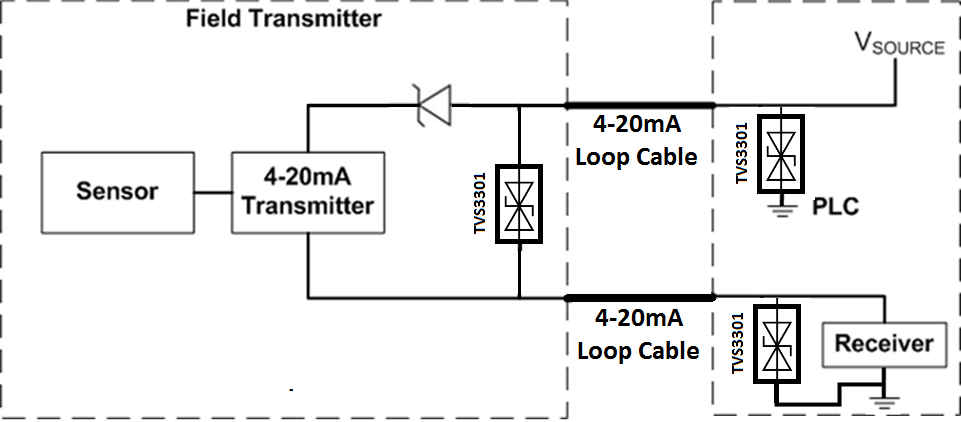SLVSEG2B September 2018 – September 2022 TVS3301
PRODUCTION DATA
- 1 Features
- 2 Applications
- 3 Description
- 4 Revision History
- 5 Description (continued)
- 6 Device Comparison Table
- 7 Pin Configuration and Functions
- 8 Specifications
- 9 Detailed Description
- 10Application and Implementation
- 11Power Supply Recommendations
- 12Layout
- 13Device and Documentation Support
- 14Mechanical, Packaging, and Orderable Information
Package Options
Mechanical Data (Package|Pins)
- DRB|8
Thermal pad, mechanical data (Package|Pins)
- DRB|8
Orderable Information
10.1 Application Information
The TVS3301 can be used to protect any power, analog, or digital signal from transient fault conditions caused by the environment or other electrical components. One common example is using the TVS3301 to protect both sides of a PLC module and a sensor transmitter, as shown in the following figure. The transmitter side of this will be examined in more detail in the following section.
 Figure 10-1 TVS3301 Application Example
Figure 10-1 TVS3301 Application Example